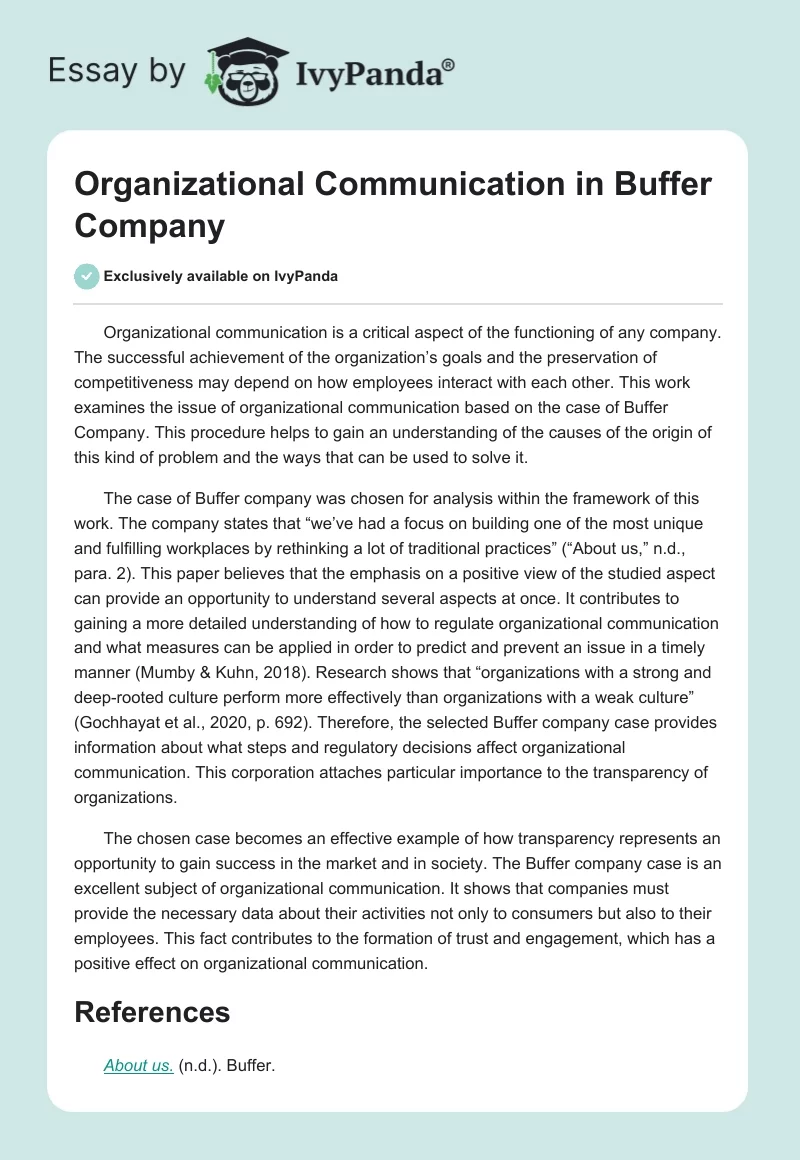Organizational communication is a critical aspect of the functioning of any company. The successful achievement of the organization’s goals and the preservation of competitiveness may depend on how employees interact with each other. This work examines the issue of organizational communication based on the case of Buffer Company. This procedure helps to gain an understanding of the causes of the origin of this kind of problem and the ways that can be used to solve it.
The case of Buffer company was chosen for analysis within the framework of this work. The company states that “we’ve had a focus on building one of the most unique and fulfilling workplaces by rethinking a lot of traditional practices” (“About us,” n.d., para. 2). This paper believes that the emphasis on a positive view of the studied aspect can provide an opportunity to understand several aspects at once. It contributes to gaining a more detailed understanding of how to regulate organizational communication and what measures can be applied in order to predict and prevent an issue in a timely manner (Mumby & Kuhn, 2018). Research shows that “organizations with a strong and deep-rooted culture perform more effectively than organizations with a weak culture” (Gochhayat et al., 2020, p. 692). Therefore, the selected Buffer company case provides information about what steps and regulatory decisions affect organizational communication. This corporation attaches particular importance to the transparency of organizations.
The chosen case becomes an effective example of how transparency represents an opportunity to gain success in the market and in society. The Buffer company case is an excellent subject of organizational communication. It shows that companies must provide the necessary data about their activities not only to consumers but also to their employees. This fact contributes to the formation of trust and engagement, which has a positive effect on organizational communication.
References
About us. (n.d.). Buffer.
Gochhayat, J., Giri, V. N., & Suar, D. (2017). Influence of organizational culture on organizational effectiveness: The mediating role of organizational communication.Global Business Review, 18(3), 691-702.
Mumby, D. K., & Kuhn, T. R. (2018). Organizational communication: A critical introduction. Sage Publications.


